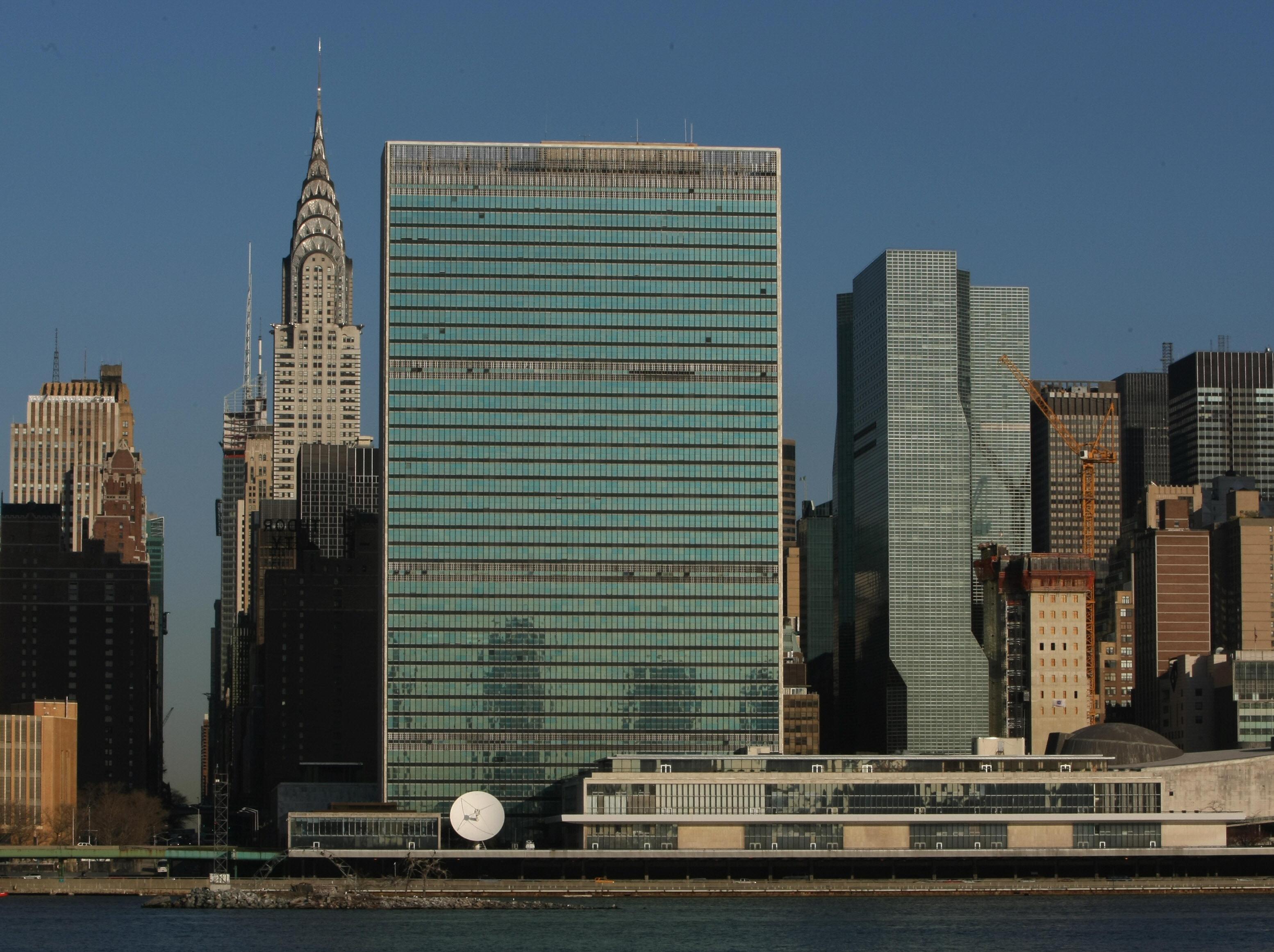In addition to the issues discussed each year at the U.N. General Assembly, the meetings themselves, and the arrival of the world leaders who attend them, always create a certain amount of their own drama.
Though it won’t quite top the comedy of the time Muammar al-Qaddafi rented land from an unwitting Donald Trump, or the terror of the time the Secret Service almost accidentally shot Mahmoud Ahmadinejad, but this year’s main UNGA subplot revolves around Sudanese President Omar al-Bashir*, who seems intent on coming to New York despite calls by human rights groups for him to be arrested and shipped to the Hague to face trial for genocide. It’s not clear yet whether the U.S. government, which is not a member of the International Criminal Court but has turned suspects over to it in the past, has granted Bashir a visa to attend the event, as it is generally required to under the original 1947 basing agreement.
It’s not entirely unreasonable to wonder why this should be the United States’ headache at all. Americans, are ambivalent at best about the effectiveness of the organization their tax dollars fund nearly a quarter of. The country’s outstanding debt to the U.N. has been settled to a large extent under the Obama administration, but in the past, it’s gotten so bad that Ted Turner has had to open his checkbook. New Yorkers, in particular, bristle at the worse-than-normal Manhattan gridlock caused by the annual meeting, the restrictions on movement around U.N. headquarters, and the $5 to $7 million worth of security arrangements required–not to mention the year-around annoyance of U.N. diplomats ignoring tens of millions of dollars in unpaid parking tickets. And with recent reports about the extent of U.S. bugging at U.N. headquarters, other delegations might be having some second thoughts about their hosts as well.
So why do we have to host these guys again? Might, as some have suggested, less densely populated site in a country less likely to be at the center of whatever major international controversy is happening in any given year be a more appropriate venue?
Given the anti-American vitriol sometimes on display at UNGA, it might surprise Americans today that when the location of the U.N. headquarters was originally decided, the United States was the overwhelming consensus choice.
As Charlene Mires writes in her fun new book, Capital of the World: The Race to Host the United Nations, “With so much of the world struggling to recover from wartime destruction, it was a predominantly American crusade.”
The big European powers pushed to locate the U.N. on the continent. but even boosters of this plan acknowledged the difficulty of locating the new organization in the midst of the wreckage of war. “There are ruins everywhere, and even where there are no ruins, there are terrible problems,” admitted one French diplomat. Relatively unscathed Geneva was a possibility but carried associations with the ill-fated League of Nations.
When a vote on the location of the headquarters was taken in London in 1945, the United Kingdom, France, the Netherlands, and Canada voted for a European headquarters. As Mires writes, “The rest, from Latin America (Brazil, Chile, and Mexico), the smaller nations of Europe (Yugoslavia and Czechoslovakia), the Pacific (Australia and China), the Soviet Union, and Iran voted for a new start for the new organization, in the United States.”
The Soviets were enthusiastic backers of the plan. “The old world has had it once, and it is time for the New World to have it,” said Moscow’s representative Andrei Gromyko, later to become known as a perennial thorn in the side of U.S. foreign-policy ambitions during the Cold War. The Soviets may also have been calculating that a U.N. presence in Europe would counter their own plans for expansion.
The drama of the U.N. headquarters location, and the main subject of Mires’ book, was less about country than city, with locations throughout the United States mounting bids to become the “capital of the world”. San Francisco and Philadelphia were frontrunners for a while. Detroit put in a surprisingly strong showing. Even Black Hills, South Dakota mounted a bid. New York City, and Manhattan in particular, (Robert Moses badly wanted it in Flushing) was something of a last minute compromise solution after all other sites had been rejected.
In the 60 years since the U.N. moved into Turtle Bay, populist politicians have periodically called for it to be kicked out, and there have been “modest proposal” sort of proposals for it to be moved elsewhere, but despite Washington’s sometimes contentious relationship with the body, there has never been serious consideration of it being based anywhere else. In fact, Le Corbusier and Oscar Niemeyer iconic but somewhat the worse for wear is currently undergoing a $2 billion renovation.
As they inch their way through Manhattan traffic this week, New Yorkers might take some comfort in the fact that despite the yearly annoyance of the General Assembly, the security costs, and the traffic tickets, the city does actually turn a profit from hosting the United Nations. Plus, nobody really thinks of the U.N. as the “capital of the world” anymore, but the city can at least take pride in the fact that it was once thought of that way. For better or worse, the U.N. and New York are stuck with each other.
*Correction: This post originally referred to the president of Sudan as Muammar al-Bashir. His first name is Omar.
